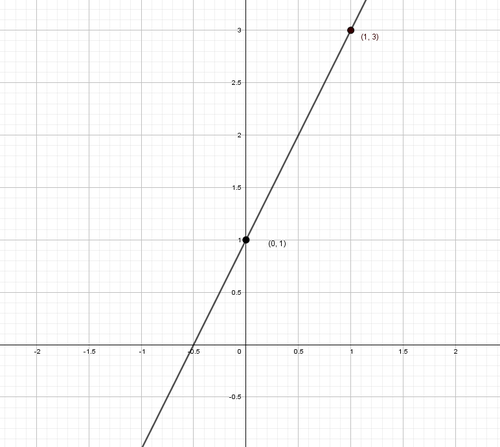Difference between revisions of "Math 22 Graph of Equation"
Jump to navigation
Jump to search
| Line 45: | Line 45: | ||
|} | |} | ||
| + | ==Circles== | ||
| + | |||
| + | The standard form of the equation of a circle is | ||
| + | |||
| + | <center><math>(x-h)^2+(y-k)^2=r^2</math></center> | ||
'''This page were made by [[Contributors|Tri Phan]]''' | '''This page were made by [[Contributors|Tri Phan]]''' | ||
Revision as of 07:13, 13 July 2020
The Graph of an Equation
The graph of an equation is the set of all points that are solutions of the equation.
In this section, we use point-plotting method. With this method, you construct a table of values that consists of several solution points of the equation
For example, sketch the graph of . We can construct the table below by plugging points for .
| x | 0 | 1 | 2 | 3 |
| y=2x+1 | 1 | 3 | 5 | 7 |
So, we can sketch the graph from those order pairs.
Intercepts of a Graph
Some solution points have zero as either the -coordinate or the -coordinate. These points are called intercepts because they are the points at which the graph intersects the - or -axis.
To find -intercepts, let be zero and solve the equation for . To find -intercepts, let be zero and solve the equation for .
Example Find the x-intercepts and y-intercepts of the graph
| Solution: |
|---|
| x-intercept: Let , so , hence , therefore, or |
| y-intercept: Let , so |
| Answer: and are x-intercepts |
| is y-intercept |
Circles
The standard form of the equation of a circle is
This page were made by Tri Phan













